Up to Ypres August 1916 – July 1917.
This page is under construction. As I work through the Unit War Diary and those private diaries that have been kindly send to me, I will add content to this page. I am working through the history of the 130th (St John) Field Ambulance in chronological order and will fill this page with full detail in due course.
Week 35 at War continued
At 5.30am on Wednesday 2nd August, B section under Capt Anderson march from the Unit’s HQ at Volkerinckhove to relieve a party of a field ambulance unit of the 4th Division at Herzeele and also to take over the Divisional Rest Station and also the Divisional rest Station for Officers at Wormhoudt. Capt A Jones left at the same time to meet the OC Sanitary Section at Zeggerscappel. Lieut Burke and an interpreter reported to the Staff Captain at Herzeele to act as the billeting party. The rest of the Unit continues to pack up ready for the move the next day. The weather was described as champion and a number of the men enjoyed a dip in the river followed by a sing song.
The following day, another pleasant warm one, the remainder of the Unit paraded in full marching order at 5.30am and marched behind the 14th Welsh to Wormhoudt arriving at 10.30am. No men of the Unit fell out on the march. The D.R.S for Officers (subsequently referred to as the Corps Rest Station (C.R.S.) for officers) and the one for other ranks was handed over to Capt Anderson at 9.30am, there being only one officer and men as patients at the time. B and C sections of the Unit proceeded in the afternoon to Herzeele to establish the Unit’s Main Dressing Station. A Divisional Rest Station (D.R.S.) was for for either officer or men who were likely to be fit for duty in 14 days or less. Those who’s injuries or illness was likely to take longer to recover would be evacuated back further along the lines of evacuation and when fit again would be placed in the general reserve rather than returning to their original unit.
The Officers rest station was in a Chateau facing the square in Wormhoudt with good gardens and grounds to its rear. An anteroom, dining room and conservatory where used for the officers beds (total of 17 but this number could be increased) and there was also a good kitchen.
The D.R.S. for other ranks was located just to the east of Wormhoudt on the road to Esquelbecq and consisted of a well laid out camp of 10 wooden huts capable of holding 10-15 patients each. When the Unit took over this D.R.S., 8 of the huts where being used to accommodate patients, one being used as a dinning room and one as a reading room. There were also a number of bell tents. There were good cooking arrangements and ablutions for the Unit’s personnel and patients had all been left in a tidy condition. There was an annexe to this D.R.S. adjacent to it that consisted of two school rooms able to accommodate 12 patients in each (increased to 15-20 if necessary), a dispensary and a couple of bell tents and a covered shed for a pack store.
The M.D.S. taken over by the Unit at Herzeele consisted of eleven bell tents which was supplemented by the Unit’s own canvas, was used to form a ‘Skin Depot (hospital)”, around which a wire fence was erected to separate these cases from the rest of the camp. One of the Unit’s operating tents was used as a bath house from which a system of drains were dug to filter pits to cleanse the water for reuse! A shelter was also erected for patients to use as a dinning room.
Lt Col Davies spends much time over the next few months describing, often in minute detail, his inspections of the sanitary arrangements at various camps, the construction of toilet facilities and methods of disposal of human waste. With so many thousands of men accommodated in make shift camps in the rear of the Ypres salient without access to running water or sewage systems it was essential that measures were taken to provide suitable temporary sanitary arrangements to prevent the contamination of water courses and the spread of disease. The work of the R.A.M.C. was not just to treat the sick and wounded but also to maintain the fighting efficiency of the troops and so vast was the task that it could not be left solely to the small divisional sanitary section.
As so often, Lt Col Davies set the Unit to improving the facilities at the M.D.S. and new kitchens were erected as well as fly-proof latrines for the officers and men of the Unit and separate latrines for the M.D.S. patients and also for the patients in the ‘skin hospital’. A new incinerator was also built near the latrines.
At the morning parade on the 4th July, the ‘Special order of the Day’ of the Commander in Chief was read out and the rest of the day was spent with fatigues and improvements to both the M.D.S. and the ‘skin hospital’.
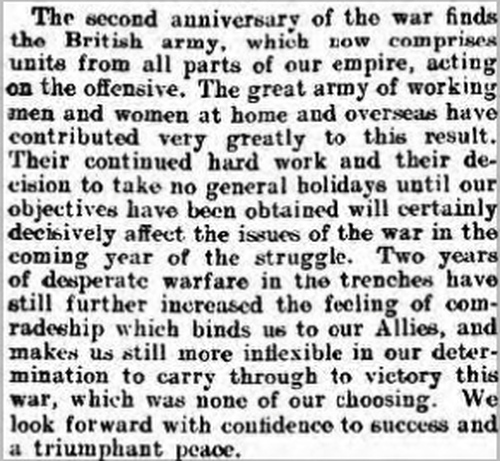
The Unit’s Hospital for sick as well as the skin hospital at Herzeele and open for business. 48563 Pte Ieuan Phillips describes the sick wards 1 and 2 as well as the Unit’s offices being located in a fine Chateau which he calls a ‘Nobly place’ while the skin hospital in its tented compound ‘looks very nice too’.
Week 36 at War – 5th – 11th August 1916, Wormhoudt – Herzeele
The fine weather continued as did work to improve the Unit’s two facilities on the 5th with arrangements made to erect a new disinfector at Herseele and white washing of the mens billets at Wormhoudt. On the following day, Surgeon General Porter D.M.S. VIII Corps visited the Rest Stations for both Officers and men and the Units Hospital at Herzeele and on the 7th, Capt David Roberts Williams RAMC reported for duty and was placed on the strength of the Unit. In the evening a cricket match was held against the 4th Division Supply Column MT A.S.C. who won by 18 runs. A rematch was held on the following day and this time the Unit lost by only 1 run.
On the 9th, The A.D.M.S. visited the Unit and inspected men classified as P.B and T.U. at Herzeele. On the following day, Lt Col Davies records that he preformed a double lower limb amputation on a 2 1/2 year old child who’s wound had become infected.
Week 37 at War 12th – 18th August 1916, Wormhoudt – Herzeele
On the 14th, the 114th Brigade moved into the forward area taking up positions in and around Poperinghe and Elverdinghe. Lt Col Davies was approached to act as Sanitary advisor to the Town Major at Wormhoudt and with him, he visited the butcher shops and abattoir where is detected a large number of sanitary defects.
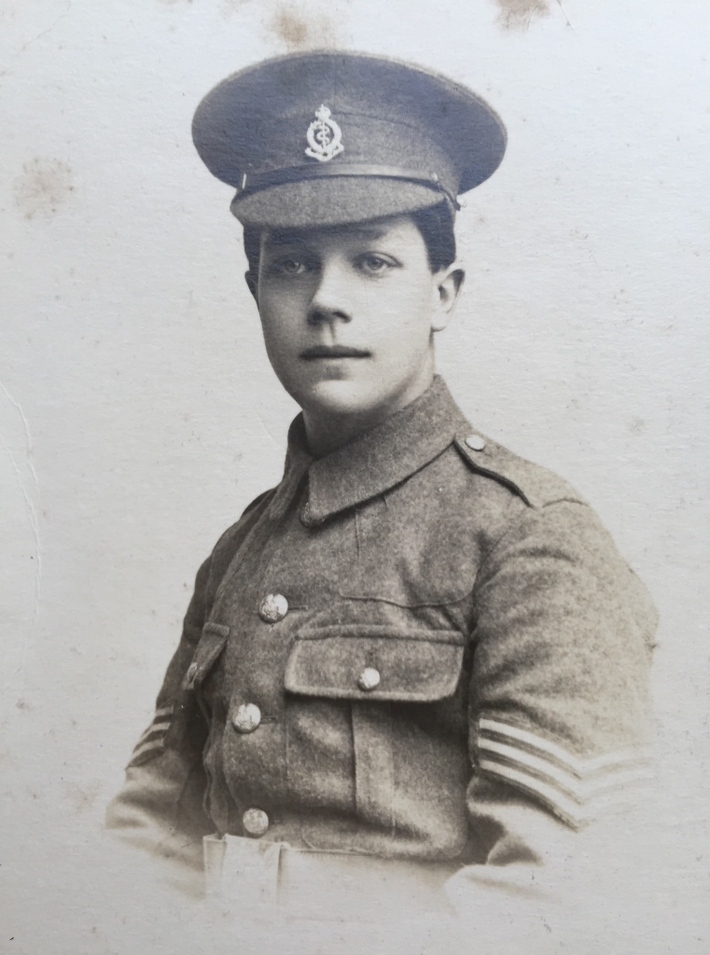
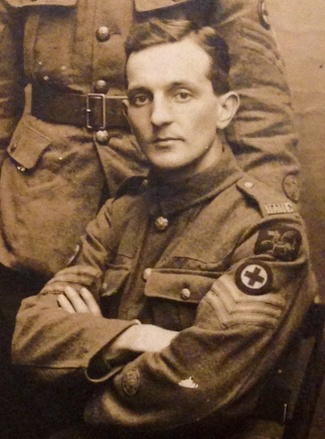
On the 15th, two of the Unit’s sergeants were temporally detached from the Unit. 48135 Sgt Clifford Jarman being sent to the G.H.Q. supply column and 48135 Sgt Francis Sumption to the Divisional baths at Couthove. 48563 Pte Ieuan Phillips was sent to Herzeele to take over from 48135 Sgt C Jarman to act as deputy Orderly Room Sergeant.
Lt Col Davies submitted his sanitary recommendations to the town Major of Wormhoudt and he also submitted to the A.D.M.S. a suggested scheme of winter improvements for the Unit’s locations. On the following morning he attended a conference at the office of the D.D.M.S. at Couthove and also inspected the baths and laundry there. Three reinforcements arrived this day, one English, one Scottish and one Welsh but unfortunately their names are not recorded.
On the 17th, the good weather continued. The Corps Rest Station for Officers and the Divisional Rest Satation for the men as well as the Unit’s Hospital at Herzeele was visited by the D.D.M.S. VIII Corps. Tetanus was reported in one of the Unit’s H.D. (heavy draft) horses at Herzeele.
The Q.M. and Honorary Lieutenant Thompson reported back for duty this day following his treatment for a problem with his right knee.
By the 18th August, a large number of the improvements had been completed at Herzeele and a new incinerator was in the process of being constructed at Wormhoudt.
Week 38 at War 19th – 25th August 1916, Wormhoudt – Herzeele – Proven
Orders were received by the Unit to send an advanced party to take over the Divisional Rest Station at Proven from the 12th Fld Amb of the 4th Division but this order was later cancelled.
On the 20th, Capt D R Williams, who had only recently joined the Unit as posted for temporary duty to the Divisional Mining School at Volrerinkhove while Lieut F A Anderson, having completed his overseas contract returned to England and was taken off the strength of the Unit.
The H.D. grey gelding horse suffering from tetanus was destroyed by order of the A.D.V.S. and the carcass buried in a deep pit with lime.
Wednesday 23rd, 48128 Sgt Francis B Sumption returned to the Unit following his week of instruction at the water plant at Couthove. He had had a good time there and described being back at the Unit like ‘Monday morning after the weekend or coming home from one’s summer holiday’. That evening, having spent the day packing up the Unit’s equipment for yet another move, he and his fellow dispenser, 48227 Sgt Louis C Cohen went to a cafe and had eggs and chips which was quite a treat for them.
At 1pm on the 24th, the main body of the Unit proceeded by road to Proven arriving at 5pm to relieve the 12th Fld. Amb. The Unit’s new hospital (Map sheet 27 F7b 3.3) was composed of four classrooms of a Convent school , four Belgian huts made of mud and brushwood, three marques, a wooden dining hut and a number of bell tents capable of accommodating 100 patients in the school and slightly fewer than that in the huts and under canvas. With the addition of the Unit’s own canvas, a total of 250-300 patients could be accommodated. The camp was clean but the latrines were not fly proof and Lt Col Davies decided once again that a number of structural improvements were required.
Captain Andrew Woodroffe Anderson and 12 men remained at Wormhoudt in charge of the C.R.S. for Officers and the D.R.S. for men, 3 men to act as billet wardens of the mens D.R.S. A further 3 men remained at Herzeele as billet wardens. One N.C.O. and one man were left to carry on with the baths and laundry at Wormhoudt under Capt Albert Jones and a further N.C.O. and 4 men remained at the baths at Couthove.
Week 39 at War, 26th August – 1st September 1916, Proven
Lt Col Davies continued with sanitary inspections on the 27th, and arranged for improvements at Couthove while he found the arrangements at the 333 Company A.S.C. to be most unsatisfactory especially their cook house and latrines!
On the 30th, the sanitary arrangements of the 330 Company A.S.C. were found to be as equally unsatisfactory.
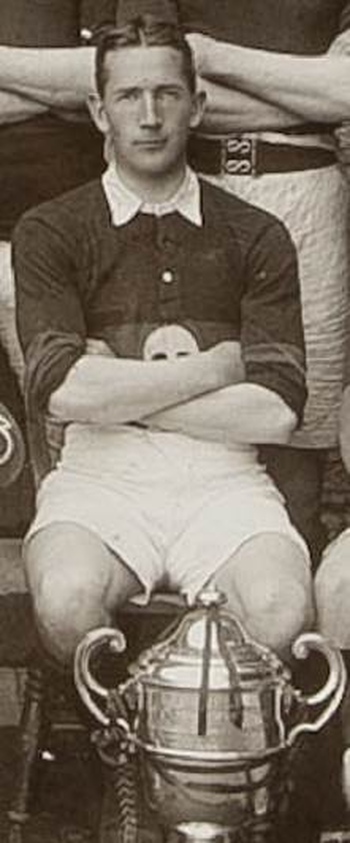
Lieut Thomas Joseph Buckley, having completed his 12 month contract, returned to England on the 31st August and was taken off the strength of the Unit.
The C.R.S. for officers and the D.R.S. for men at Wormhoudt were handed over to the 12th Fld. Amb. on the 1st September. Lt Col Davies, visited and inspected North Camp (10th Welsh) and also visited 46 C.C.S. this day.
Week 40 at War, 2nd – 8th September 1916, Proven
Lt Col Davies departed for special leave on Saturday 2nd September leaving Capt Andrew Woodroffe Anderson in charge.
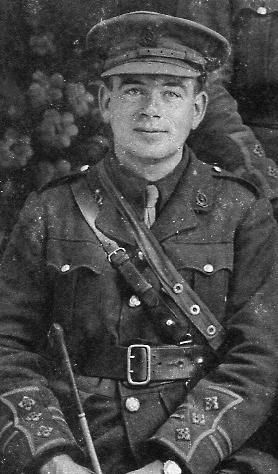
The Unit personnel that had remained at the baths and laundry at Wormhoudt were transferred to the laundry at Couthove on the 3rd.
Lieut. J H Bankes and Lieut. Myles Colt reported for duty with the Unit and, in accordance with instructions from the A.D,M.S., Lieut. R A G elliott was sent to take charge of the 38th Divisional laundry and baths at Couthove.
On the 5th September, Capt D. R. Williams returned for duty with the Unit after his time at the Divisional mining school.
Capt A W Andreson continued with the sanitary inspections of the various units of the 38th (Welsh) Division, visiting the lines, kitchens and latrines of A and B batteries, 122nd Brigade R.F.A. on the 7th and those of C and D batteries on the 8th.
Week 41 at War, 9th – 15th September 1916, Proven
Lt Col Davies returned from his leave on Saturday 9th September. Of much more importance to the men of the Unit, they took part in a Sports Day held at a CCS near by and this was followed by a Eisteddfod with poetry readings, singing and performances including a performance by a concert party of the Unit – The Busy Bees.
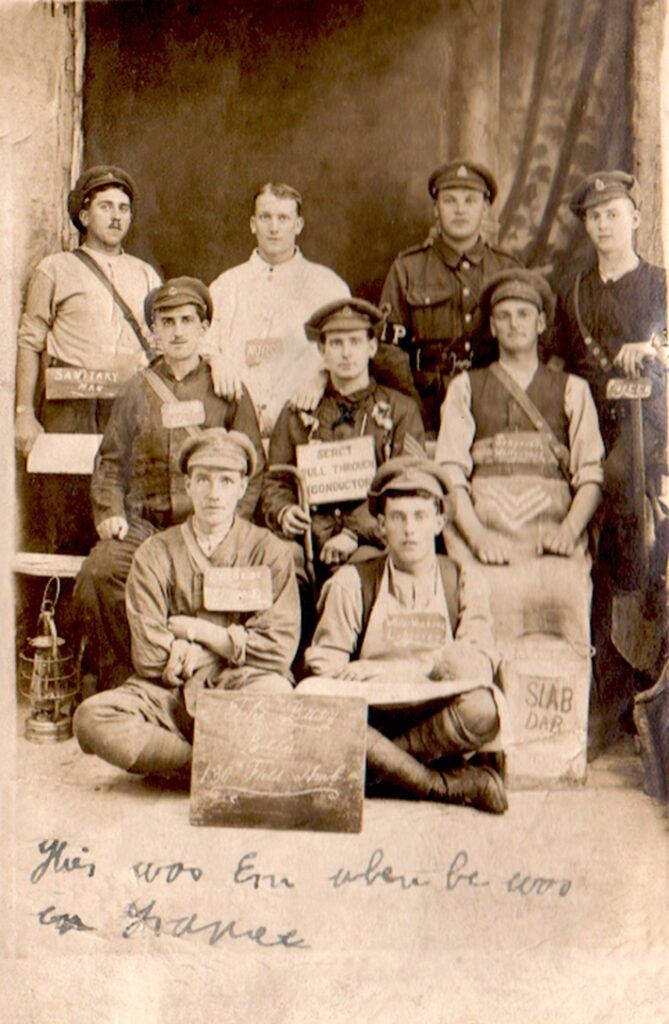
The Busy Bees photo is with kind permission of Desna Thomas, daughter of 48196 LCpl/Bugler William G Thomas. Written of the back of the photograph are the names and of each man along with the characters they were playing demonstrating the great importance of checking the reverse of these old photographs for the additional information.
Rear row (left to right), Sanitary – 48107 Pte W J Davies, Nurse – Pte J Williams (?48210), Police – 48078 Pte G Ashman, Pioneer – 48154 Pte George Lippit.
Middle row, Lamp Oil – 48193 Pte Charles Taylor, Sgt Pull Through – 48089 Pte Alfred E Burgess, White Wash – 48190 Pte William H Smith.
Front row, Chloride of Lime – 48596 Pte George Irwen, Labourer – 48258 Gilbert T Pepperell.
Lt Col Davies continued with inspections of the sanitary arrangements of various units of the 38th (Welch) Division. He visited the four A.S.C. companies of the Division on the 11th (330, 331, 332 and 333 Companies A.S.C.).
On Tuesday 12th September, the Unit was visited by Major-General C. G. Blackader the G.O.C. of the Division accompanied by the A.D.M.S. Col F. J. Morgan and later, the Lt. Col. Davies visited North Camp when the 10th Welsh (1st Rhondda Batt) where located.
48563 Pte I Phillips records at ‘We know the old man (Lt Col Davies) is back (from leave). Commenced nagging everybody. He’s like a great baby about the place.‘
The was a photographer in Proven and many of the men where having their photographs taken : the nursing sections, the sergeants and all sorts of cliques recoded Sgt Sumption who had his photograph taken with the nursing section of A Section and he also comments that Capt Anderson is one of the best. We have very fortunate to have copies of a number of photographs taken at this time but are sure there are others in existence that we have yet to see. If anyone has any of these we would be most pleased to hear from them.
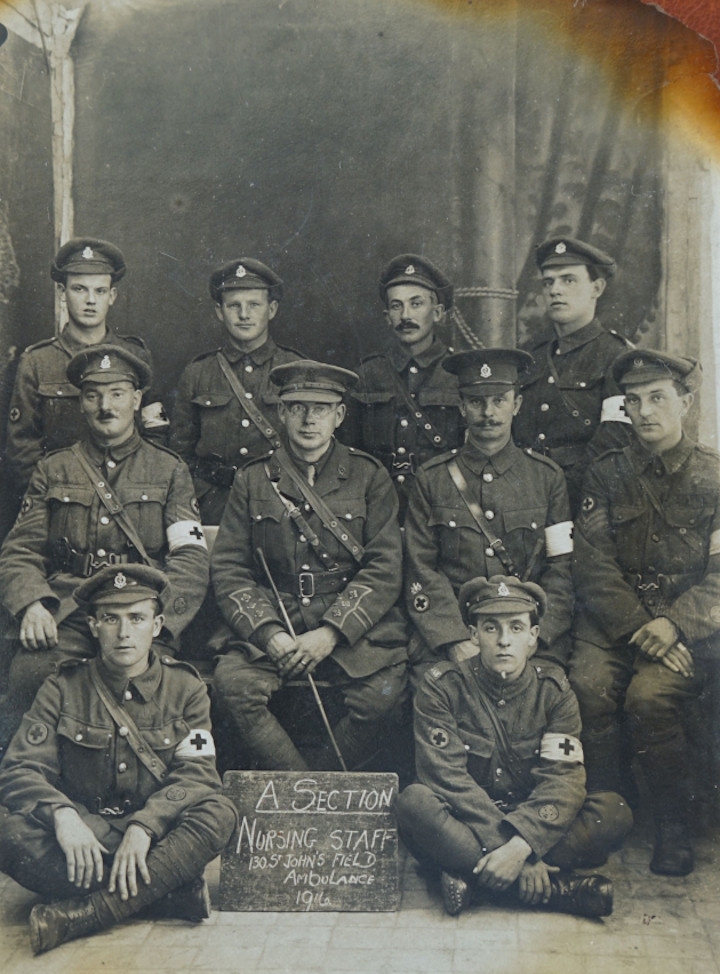
The photograph above taken on 12th September 1916 is with kind thanks to Desna Thomas, daughter of 48196 LCpl William Thomas.
From left to right – front row Pte Evan Edwards and 48635 Pte Henry Roberts, sitting (middle row) 48117 LSgt Idin George, Capt A W Anderson, 48190 Sgt Maj William Stroud, 48128 Frances B Sumption, standing (rear row) Pte W Jones, 48161 Pte David Morgans, 48110 Pte William Duggan and 48198 Emrys Thomas.
Rumours often circulated that the Unit was to be moved, the last being that it was to be sent to Egypt – sand and pyramids was much discussed – it would have been a pleasant changed from the mud of Flanders.
Lt D. C. M. Page returned to the Unit on Wednesday 13th having been acting M.O. for the 13th R. W. F. and Capt M Ffoulkes was posted for temporary duty as the M.O. for 119 R.F.A. while Capt D. R. Williams was transferred to the 14th Welsh (Swansea Batt) to be their M.O. and was struck off the strength of the Unit and replaced by Capt D. H. Griffith who had been the M.O. of the 14th Welsh and immediately proceeded to the 38th Divisional Sanitary Section to take over temporary duty as OC of the 77 Sanitary Section.
Lt Col Davies continued his work supervising the sanitary arrangements in the camps of the 330th, 331st and 332nd Coy ASC.
48128 Sgt Frances B Sumption recalled the books he was reading including Gossamer by Geo Birmingham and The case of Richard Meynell (by Mary Augusta Ward). He was also managing to read some chemistry text books. He enjoyed debating the contents of the various books he read recoding that – ‘Archie Griffiths is generally the one with whom I have the most exciting debates but Cohen and Tom Price also join in. Cohen has a brilliant detached Jewish mind and it is wonderful how unprejudiced and direct his thinking is. He seems cosmopolitian in the best sense of the word. He has read a lot of Biology so he is quite interesting‘.
Thursday 14th was cold and wet with business as usual with nothing of note to report.
Week 42 at War, 16th – 22nd September 1916, Proven
Sunday the 16th was no rest day for the Unit despite the weather being fine. The hospital at Mesplaux Farm was visited by officers and NCOs of the 38th Divisional School under the command of the OC Sanitary section. The visitors were divided into 4 groups and Lt Col Davies conducted one group and each of the other three were conducted by a senior officer of the Unit. They were shown the kitchens and all the sanitary arrangements and demonstrations were presented to the visitors.
On the same day, Capt Anderson and 8 other ranks proceeded to Wormhoudt to take over VIII Corps Rest station for Officers and also to post 2 men to act as billet wardens at the Divisional Rest Station also located at Wormhoudt. Rest stations of officers were usually at Army Corps level while those for other ranks were at Divisional level. Rest stations were established in early 1915 to care for the sick and lightly wounded. Men usually stayed no more than 10 days and then were returned to their original unit. More severely sick or injured officers and men where evacuated back to base hospitals or even the the UK and once recovered and fit for service again often ended up being posted to another unit as reinforcements rather than being returned to their original unit.
Orders were also received for the Unit to post men to act as billet wardens at the laundry and baths at Wormhoudt and those at Zeggers Capel, Bollezeele. Such duties where the responsibility of the Field Ambulance of a Division.
That evening, Sgt Sumption, finding himself free of duties went for a stroll and managed to purchase some cigars and also some fresh red-herrings that he planned to have for breakfast with his fellow sergeants. He recalls in his diary that this would be the first time they had had fresh fish since landing in France. This was going to be a pleasant change from the rissoles made from Bully beef, breadcrumbs and onion that sometimes had for breakfast. He also records that a few mornings earlier, he was eating one of these rissoles and quite enjoying it when one of the fellows in the mess told him the rissoles had been made by the scabies patients which rather took his appetite away. The rissoles had not in fact been made by the scabies patients.
The next day, Lt Col Davies received notification from the ADMS (Col F J Morgan) that under the authority granted by His Majesty the King, the Corps Commander had awarded the Military Medal to 48124 Sgt Thomas George Hopkins, 48559 L/Cpl Trevor John Nicholas, 48584 Pte William H Jones and 48187 Pte William John Ridgeway. Col Morgan ended his letter by saying that if gives me great pleasure to make this communication. These medals were being awarded for their actions at Mametz Wood back in July.
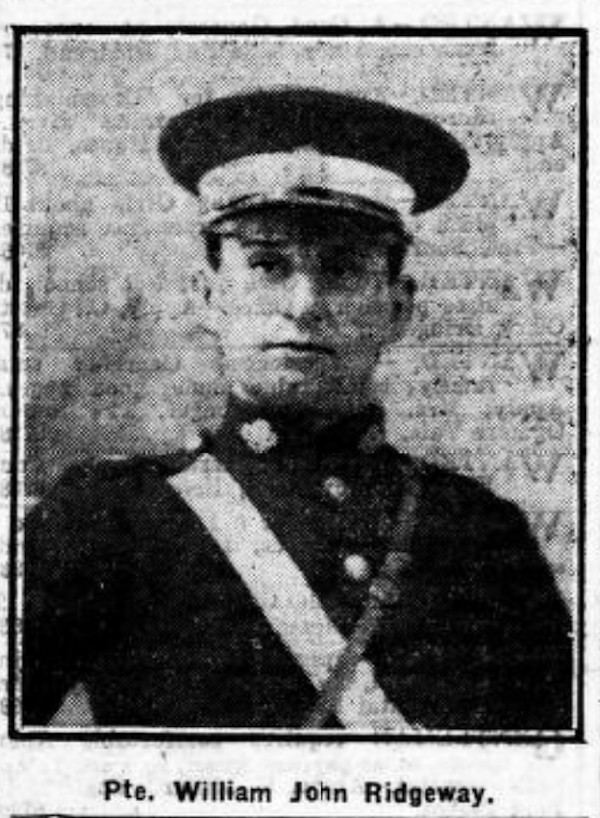
The image above is from an article in The Glamorgan Gazette 3rd November 1916 (Welsh Newspapers Online). The text of the article reads –
Garw ambulance man awarded Military Medal
Mrs R Ridgeway, Pontycymmer, has received a letter from her husband, Pte Wm John Ridgeway, R.A.M.C., 130th St. John Field Ambulance, 38th Division, B.E.F., stating that his commanding officer drew out his Unit on parade, called out his (Pte. Ridgeway’s) name, and on his stepping out of the ranks, informed him that His Majesty wished to congratulate him for his great deeds on the battlefield, for which he was awarded the Military Medal.
Garwites will be delighted to learn of the conferring on Pte. Ridgeway of this much coverted honour, as he was one of the most popular boys in the Garw Valley. He has obtained several ambulance certificates, including the medallion, and he was for many years a very faithful member of the St. John’s Ambulance Brigade, Garw Division. He has also obtained a colliery fireman’s certificate and for many years worked at Ffaldau Colliery, Pontyeymmer, prior to enlistment.
During his service at the hospitals in France he has organised many concerts and has taken part in several. He was a member of the Garw Male Voice Party. Many wounded soldiers who have returned to the district have spoken in glowing terms of Ridgeway. To quote a Pontyeymmer wounded soldier who has been attended by Ridgeway; “No soldier will die in hsopiatl if Ridgeway is present, as he keeps the whole ward laughing.” Pte Ridgeway is the son of Mr and Mrs William Ridgeway, Alexandre Road, Pontycymmer, who are old and highly respected inhabitants of the Garw Valley.
The following day, Tuesday 18th, a very wet day, the Unit was paraded at 9.30am in skeleton kit and the ADMS, Col F J Morgan congratulated the Unit and pinned ribbons of the four Military Medal recipients. The men didn’t receive the actual medal until very much later.
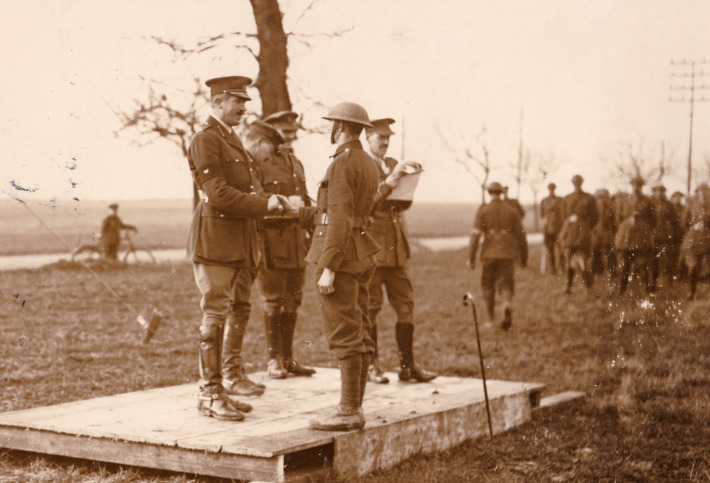
48563 Pte Ieuan Phillips recorded in his diary. “4 Military Medals to this unit out of 42 for the Division. Excelent percentage.” The division at full strength was approximately 18,000 men strong and a Field Ambulance was only 318 strong.
The business of the Unit continued much as normal on Tuesday 19. Chess had become a popular pass time for the men and when LtCol Davies was not around the men played it to relieve the monotony. One of the men had acquired an old bowler hat to impersonate Charlie Chapin and so when the Colonel came around the chess board is doubled up and the chess peices are thrown into the bowler and all the men get busy with something with innocent looks on their faces. Many things had many uses to the men. 48135 Sgt C W Jarman’s mug was a tea mug, a mug for cleaning his teeth and when turned upside down, a candle holder.
Lt Col Davies inspected the rifles and drill of the ASC men attached to the Unit on the 20th. Sgt Sumption described it as weather with a vengeance and complained that if the weather was going to be like this in September, what will it be like in the winter. He was afraid that they would all be drowned if the stop in Proven. That evening, the three dispensers (Sgt Cohen, Price and Sumption) were snugly in bed reading by candle light when Eddie Lewis (48587 S/Sgt Edgar Lewis) pushed his head into their tent to see if there was any room for him as he had been locked out of his billet. He then spent some time disturbing the three Sergeants by walking about until they pulled him to the ground and pinned him down. At night they slept on the ground but had become quite used to the hardness.
A chilly and damp day. Capt Griffith rejoined the Unit on the 21st having been acting OC of the Sanitary Section and Lt J H Banks transferred to 129th Fld Amb and struck off the strength of the Unit. Lt Col Davies visited the 129th Fld Amb and then the HQ of the Army Ordnance Department and in particular, a recently cleared out cesspool. He found the latrines unsatisfactory and ordered that a new site be arranged with fly-proof latrines. A far from glamorous task but none the less, a very important role of the R.A.M.C. in maintaining the health of the troops.
Receiving letters from home was always eagerly anticipated and a little crowd would form around the postman when every he came to the Unit.
Sgt Sumption was trying to learn German from a book he had been given and was attempting to do a lesson a day but was unsure how it would turn out. He felt that you had to be very young to learn a language as it it required such a feat of memory that he didn’t feel he possessed. It was his afternoon off duty and he spent it, lying on a stretcher in his tent reading and sleeping.
Over night 21st/22nd September, Dvr J D Evans ASC attached to the Unit was slightly wounded in the back when, while entering Ypres driving one of the G.S. (General Service) wagon to carry bricks when a H.E. (high explosive) shell landed close by. The wagon was damaged and the team of two horses following received superficial cuts from falling debris. With the widespread use of animals, especially horses during the war, it wasn’t only men that where killed and wounded. The weather on the 22nd was ‘lovely’ according to 48563 Pte Ieuan Phillips
Sgt Sumption relates in his diary on this day that every man admitted to the hospital must have his condition recorded with a diagnosis and diagnostic code from a book ‘The Nomenclature of Disease’ and these be recorded in the Unit’s Admission and Discharge book. The Nomenclature of Disease was a work produced by the Royal College of Physicians at at the time was in its 4th edition 1906 (work on a 5th edition was started in 1912 but was not published until 1917) and gave every disease a code number for ease of classification.
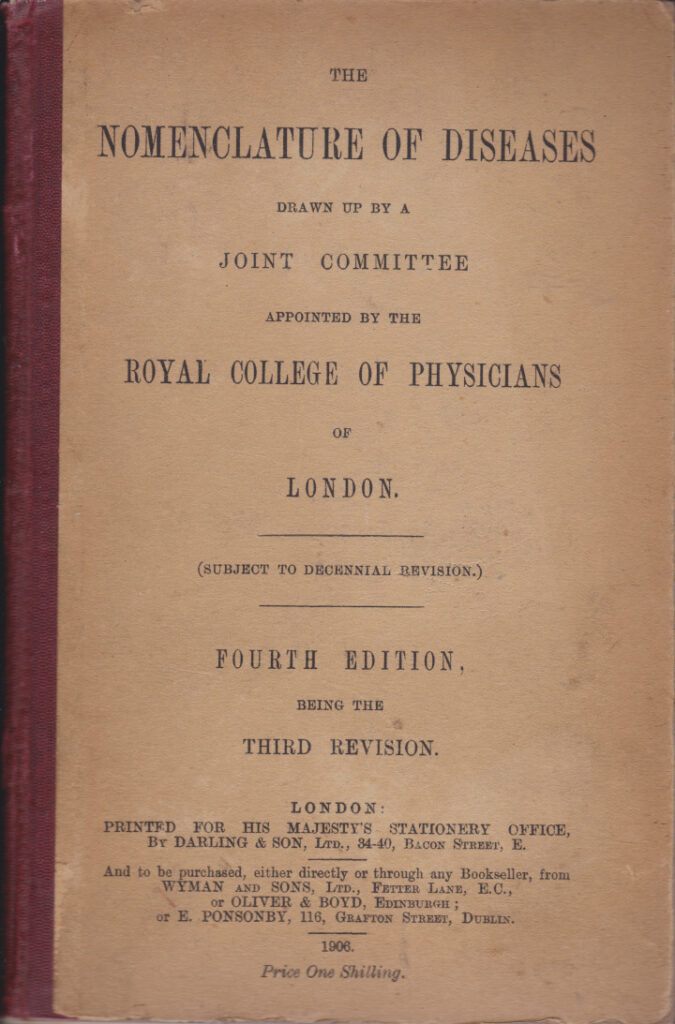
Unfortunately the Admission and Discharge books of the Unit have not survived but I have not seen examples of the code numbers from the Nomenclature of Diseases used in those few Admission and Discharge books of other units that have survived so I don’t know if the uses of these codes was something LtCol Davies introduced or if it was limited to the medical units of the 38th Welsh Division or Corps.
Sgt Sumption goes on to record that whatever condition a man has must be twisted by hook or crook into something contained in the book, so the Medical Officers had to keep one eye on the patient and the other on the book whilst he chooses a disease which will in some way suit him!
Amusingly, Sgt Sumption also records (although as can be seen in the photograph below, slightly incorrectly) that it so happens that the number for diarrhoea is 530 so when a fellow comes in with that complaint he is said to have the 5.30 express. A fellow here has gone into the reasons for that number, why not 10.30 or 12.30? No, said he, it is 5.30 because it generally attaches at that time in the morning when you turn over for your final nap. Of course the meaning and reason for “express” is very patent!
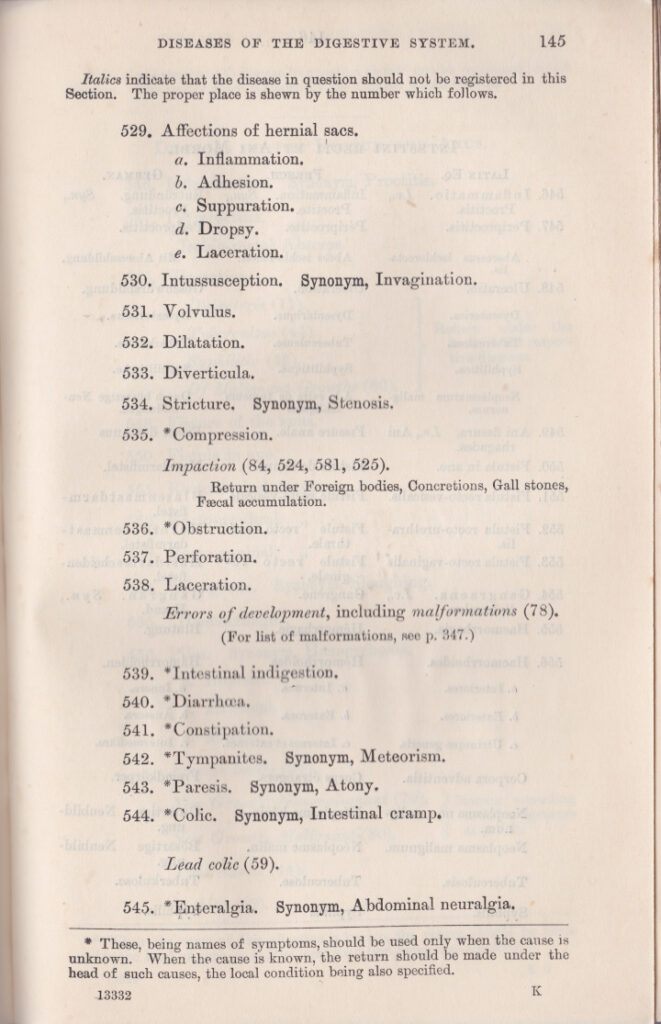
Week 43 at War, 23rd – 29th September 1916, Proven
Week 44 at War, 30th September – 6th October 1916, Proven

These were similar to the many shelters along the Canal Bank that the Unit occupied during the time before and during the battle of Pilckem Ridge in 1917.

Be the first to comment